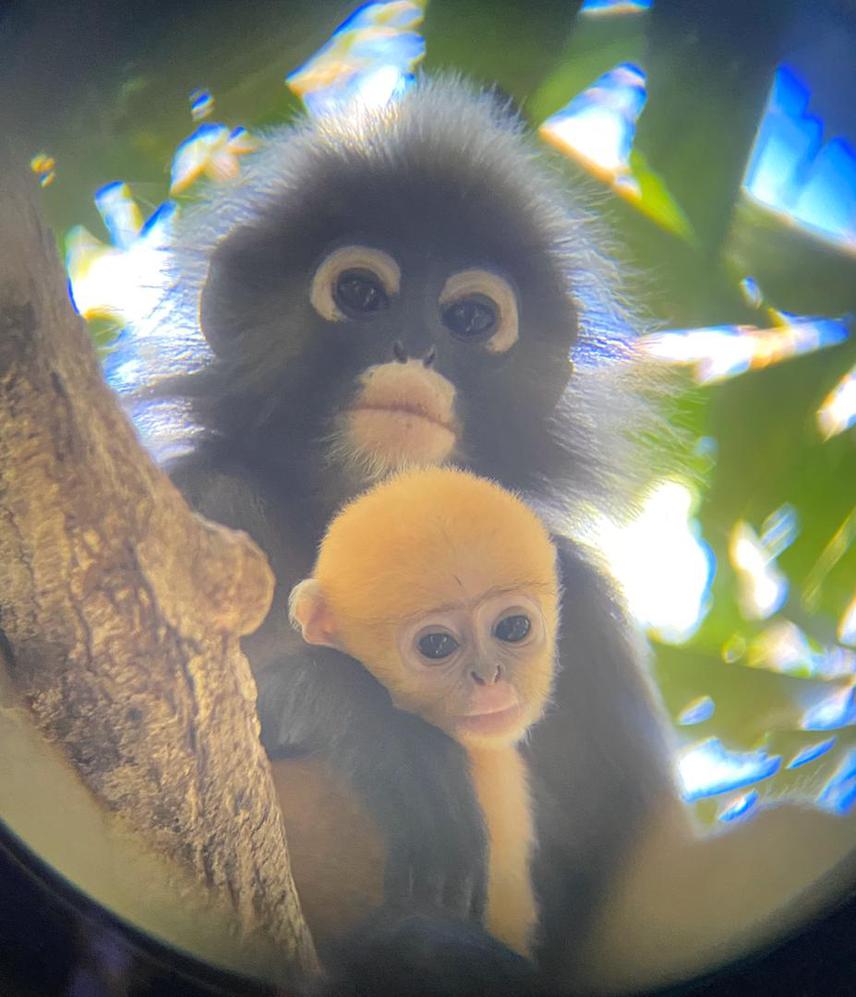Jo Leen Yap
Other projects
9 Feb 2016
Activity Patterns, Habitat Use and Diet of Dusky Leaf Monkeys (Trachypithecus obscurus) in Penang, Malaysia
22 Aug 2017
Road Ecology and Canopy Bridges for Arboreal Wildlife to Cope with Habitat Fragmentation in Penang
14 May 2024
Langur Project Penang: A Community-Led Approach to Urban Monkey Conservation in Peninsular Malaysia
Langur Project Penang (LPP) was established in 2016. LPP studies the ecology of dusky langurs, works with citizens to develop environmental education programmes, and has constructed the 1st urban canopy bridge in Malaysia to assist dusky langurs and other arboreal mammals to cross the road safely. Studies about seed dispersal roles and identification of wildlife crossing zones are needed to better understand the anthropogenic influences on langurs' ecology and behaviour in an urban environment. to promote better coexistence between humans and wildlife. Future conservation effort will focus on studying the seed dispersal role of dusky langurs, installing more urban canopy bridges, enhancing environmental education by establishing an education hub to improve community science efforts with communities in Penang and in different parts of Malaysia.

A female and an infant dusky langur. © Fitri Suhaimi.
Dusky langur (Trachypithecus obscurus) is an Endangered (EN) species under the IUCN Red List. Yet, there is a lack of research on the species' ecology, behaviour, genetics, and life history. The arboreal species can be found in Myanmar, Thailand, and Peninsular Malaysia, including small islands. Dusky langurs’ current population trend is decreasing due to threats such as residential development, roads, agriculture, hunting and illegal wildlife pet trade. These threats lead to increased human-primate interface and enhance the possibility of disease transmission. Hence more research and conservation planning is required to promote respect and co-existence between humans and dusky langurs.
Langur Project Penang (LPP) is a research and conservation group that conduct long-term comprehensive monitoring of dusky langurs in Malaysia. By engaging citizen science, members of LPP conduct fieldwork regularly to observe and collect data of the langurs in their natural habitat. This citizen- based wildlife monitoring can ensure the species’ survival via understanding dusky langurs’ interaction with the forest, and the threats that they face. LPP regularly organises rainforest programmes and environmental education activities, both on-site and on-line. Besides, LPP has established the 1st urban canopy bridge in Malaysia. A camera trap is set up on that bridge and has so far recorded footages of dusky langurs, long-tailed macaques and plantain squirrels crossing the bridge above a busy road. To move forward, LPP will amplify its voice and advocate for human-wildlife coexistence to the local communities through three main prospects, 1) Research, 2) Conservation, 3) Education.
This project aims to research the dusky langurs' seed dispersal roles, alongside the established research on activity budget, habitat use, and diet composition on several habituated wild dusky langur groups in Malaysia. Investigating the seed dispersal role of the species would be useful for informing conservation action planning. Next, LPP is looking forward to setting up the second canopy bridge in Malaysia, while raising awareness and increasing public involvement through capacity building. Finally, LPP aims to establish a public education hub in Malaysia, to create a space for adults and kids to get involved in hands-on conservation projects. An education hub will be a good start toward establishing a research centre, which will also allow closer interactions among the local community, LPP members, and long-term volunteers.